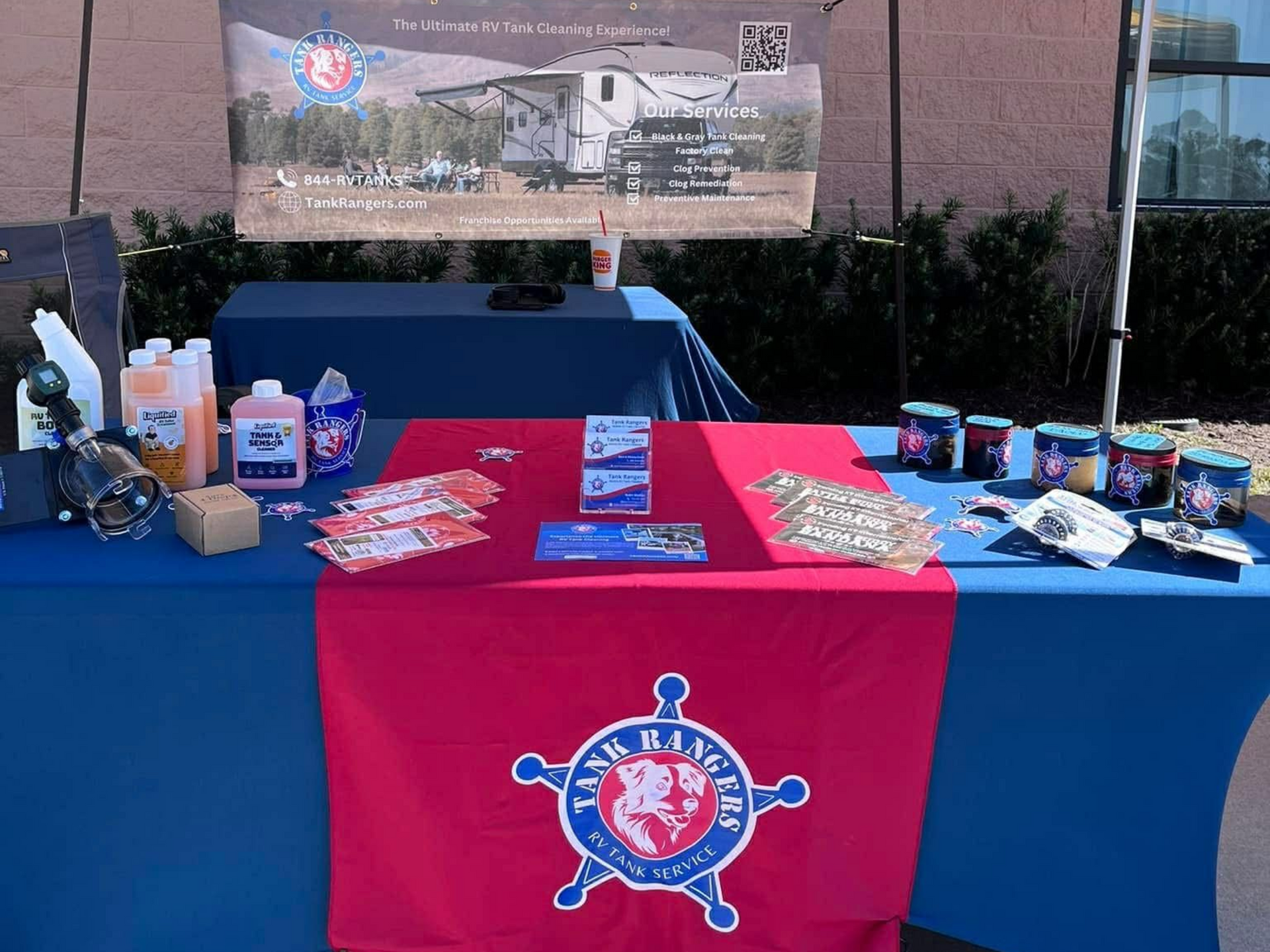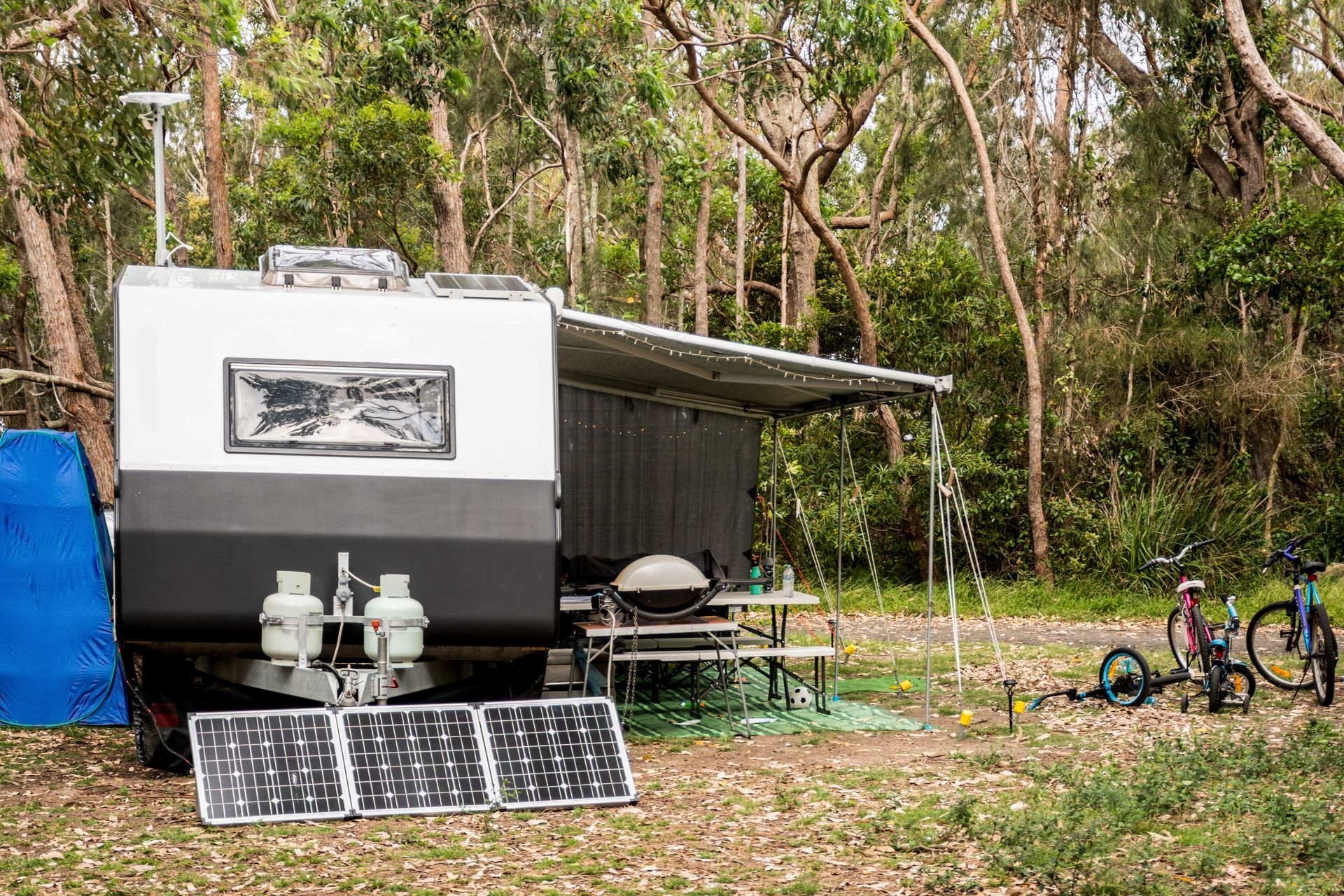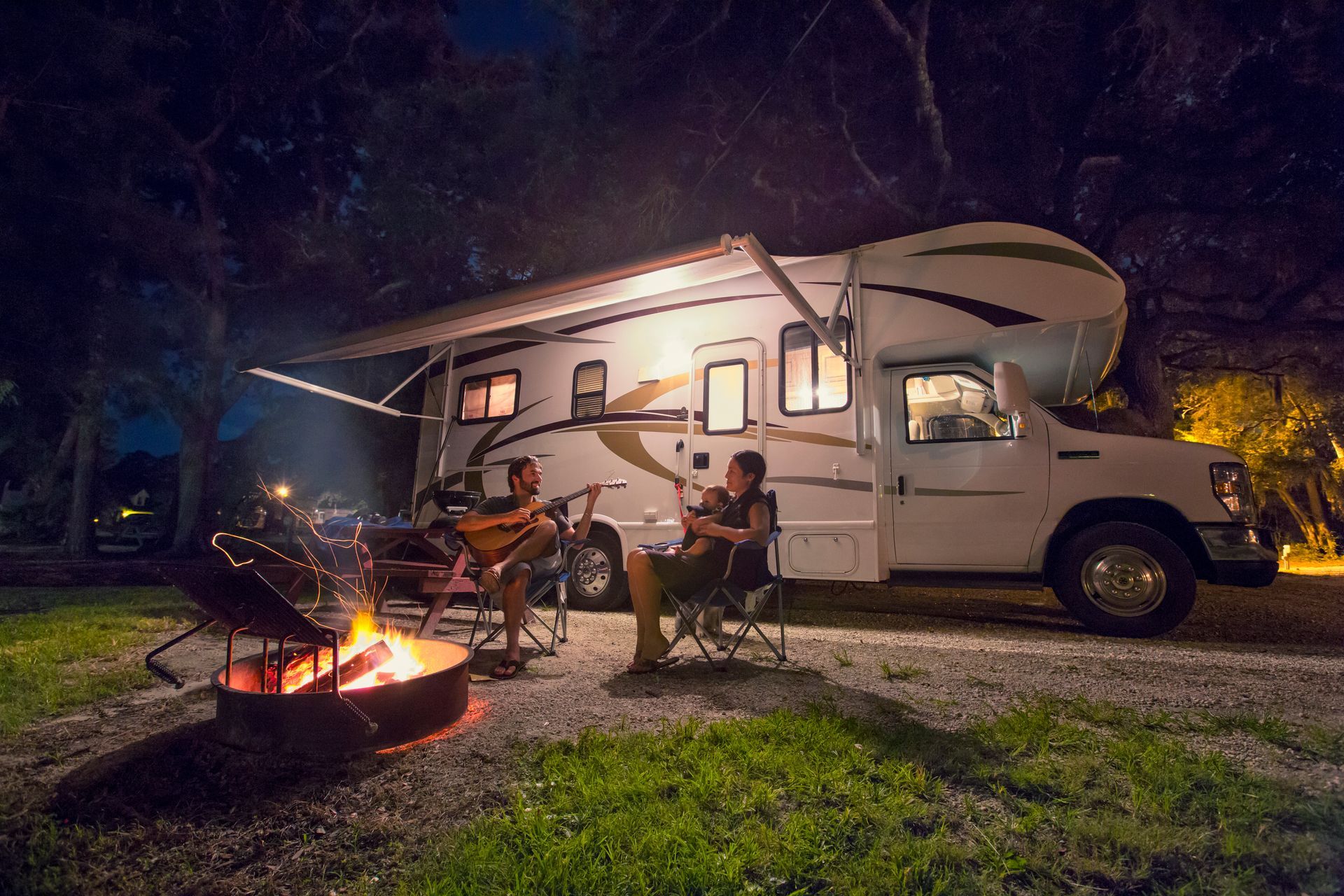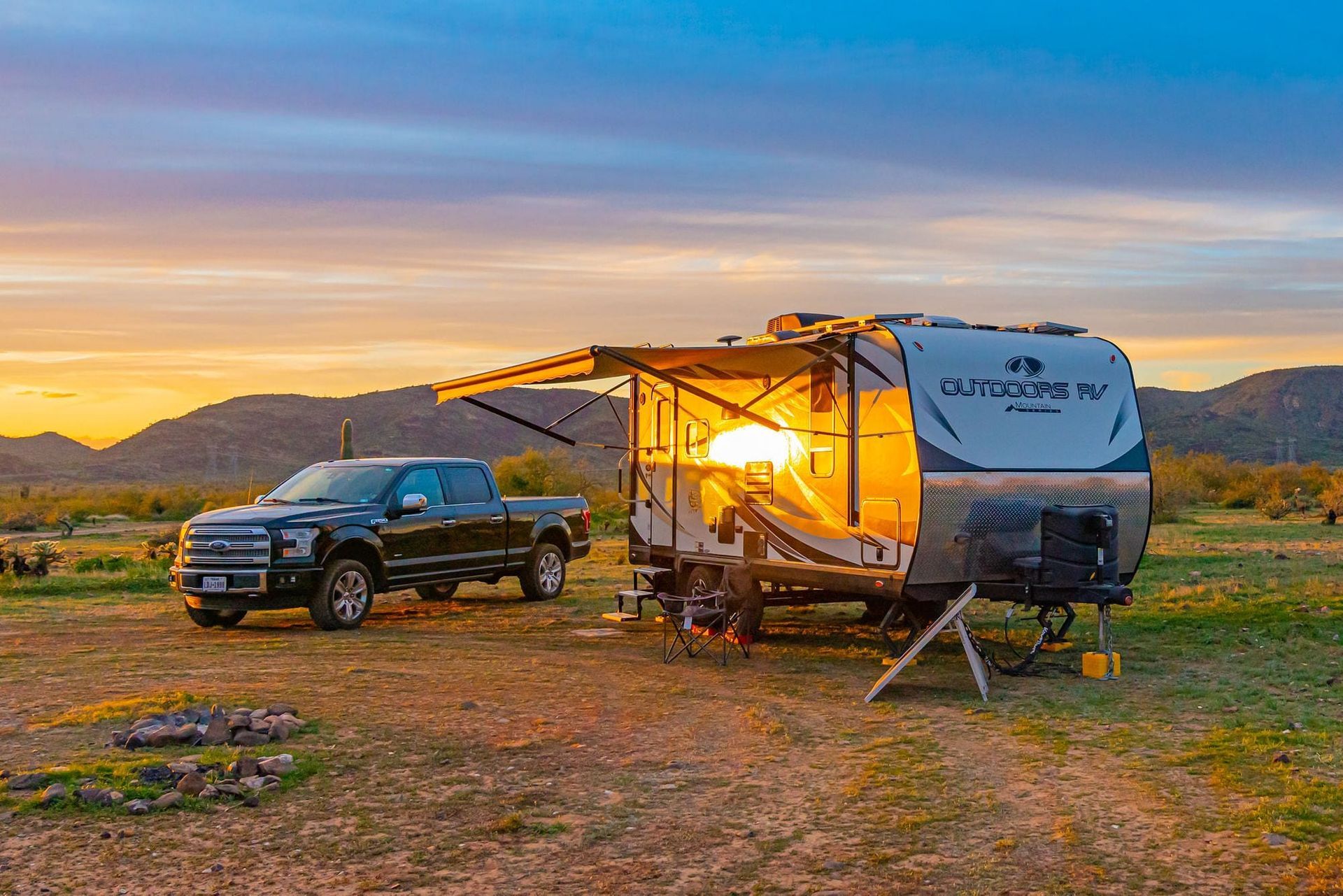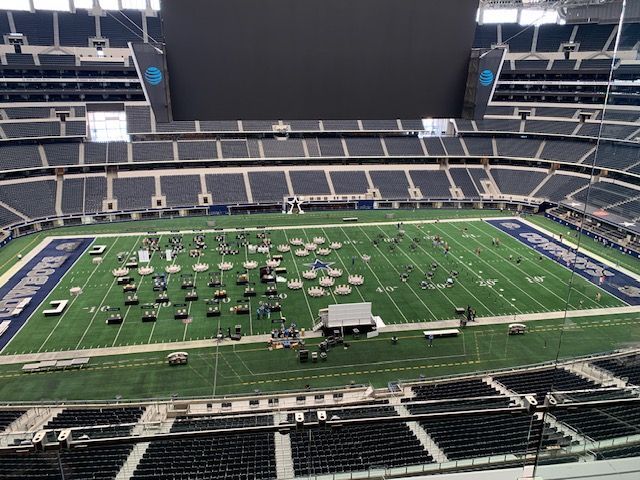Must-Have RV Essentials for First-Time Owners
Jennifer+ Aggio • August 6, 2025
Buying an RV is exciting, whether it’s your very first one or an upgrade for bigger adventures. But once you’ve signed the paperwork and rolled off the lot, reality sets in: now what? Before you hit the open road, there’s a list of must-have items you’ll want on hand to stay safe, comfortable, and fully functional at your first campground.
There’s a difference between the fun extras (hello string lights and patio decor!) and the absolute essentials (like hoses, surge protectors, and tank gear). This blog is here to help you navigate that first big shopping trip and separate the “would be nice” from the “don’t leave home without it.”
Let’s break down the necessity items every new RV owner should have ready to go, so you can spend more time exploring and less time scrambling for a sewer hose at sunset.
An RV without the right gear is just a really expensive tent on wheels.
Hookup Essentials: The Non-Negotiables for Setting Up Camp
When you pull into your campsite, excitement quickly turns into confusion if you don’t have the right gear to connect to water, power, and sewer. These are the basics, your “don’t leave the dealership without ‘em” list. Without these essentials, your RV is just a cozy box in a parking spot.
Here’s what you’ll need to hook up like a pro:
- Fresh Water Hose: Not all hoses are created equal. You’ll want a drinking water-safe hose, usually white or blue, that’s rated specifically for potable water. These are designed without harmful chemicals like lead or BPA that can leach into your water supply. Grab a hose long enough to comfortably reach the campground spigot, 25 to 50 feet is a good start.
- Water Pressure Regulator: Campground water pressure is unpredictable, it might be just right, or it might blast your RV’s plumbing like a firehose. A water pressure regulator keeps the pressure in check (usually around 40–60 psi), protecting your pipes and fittings from costly damage.
- Basic Water Filter: Even when it’s labeled “safe,” campground water can taste... funky. A basic inline water filter helps remove sediments, odors, and unwanted flavors from your water before it enters your RV’s system. It’s a small investment that makes a big difference.
- Sewer Hose Kit: You’ll need a good sewer hose kit with a clear elbow (so you can see when the job is done—yes, really) and a support system to keep the hose elevated and flowing downhill. Trust us, gravity is your best friend when it comes to dumping tanks.
- Electrical Surge Protector: Think of this as insurance for your RV’s electrical system. A surge protector (make sure you get the correct 30-amp or 50-amp version) protects against voltage spikes, faulty campground wiring, and power surges. A few hundred dollars up front could save you thousands in repairs.
- Power Cord and Extension: Believe it or not, some RVs no longer come with a power cable, its a cost cutting thing. So make sure you have a power cable for your RV. Additionally, sometimes the campground pedestal can be way at the back of the site, and your RV power cord won’t reach. A power cord extension lets you stretch the distance without losing amperage. Make sure it matches your RV’s amp rating.
See our complete Amazon list for Power Cord and Extensions.
- Extension Cord Adapters (Dog Bones): Campgrounds don’t always have the exact outlet your RV needs. These “dog bone” adapters let you connect a 30-amp plug to a 50-amp pedestal (or vice versa) or even plug into a standard household outlet in a pinch. They won’t give you full power, but they’ll keep the lights on. 30amp to 50amp Dog Bone. 50 amp to 30amp Dog Bone.
These items might not be glamorous, but they’re the foundation for a safe, functional, and stress-free camping experience. Having them on hand from day one means you're ready to roll into your campsite, hook up, and relax—without emergency trips to the nearest RV store.
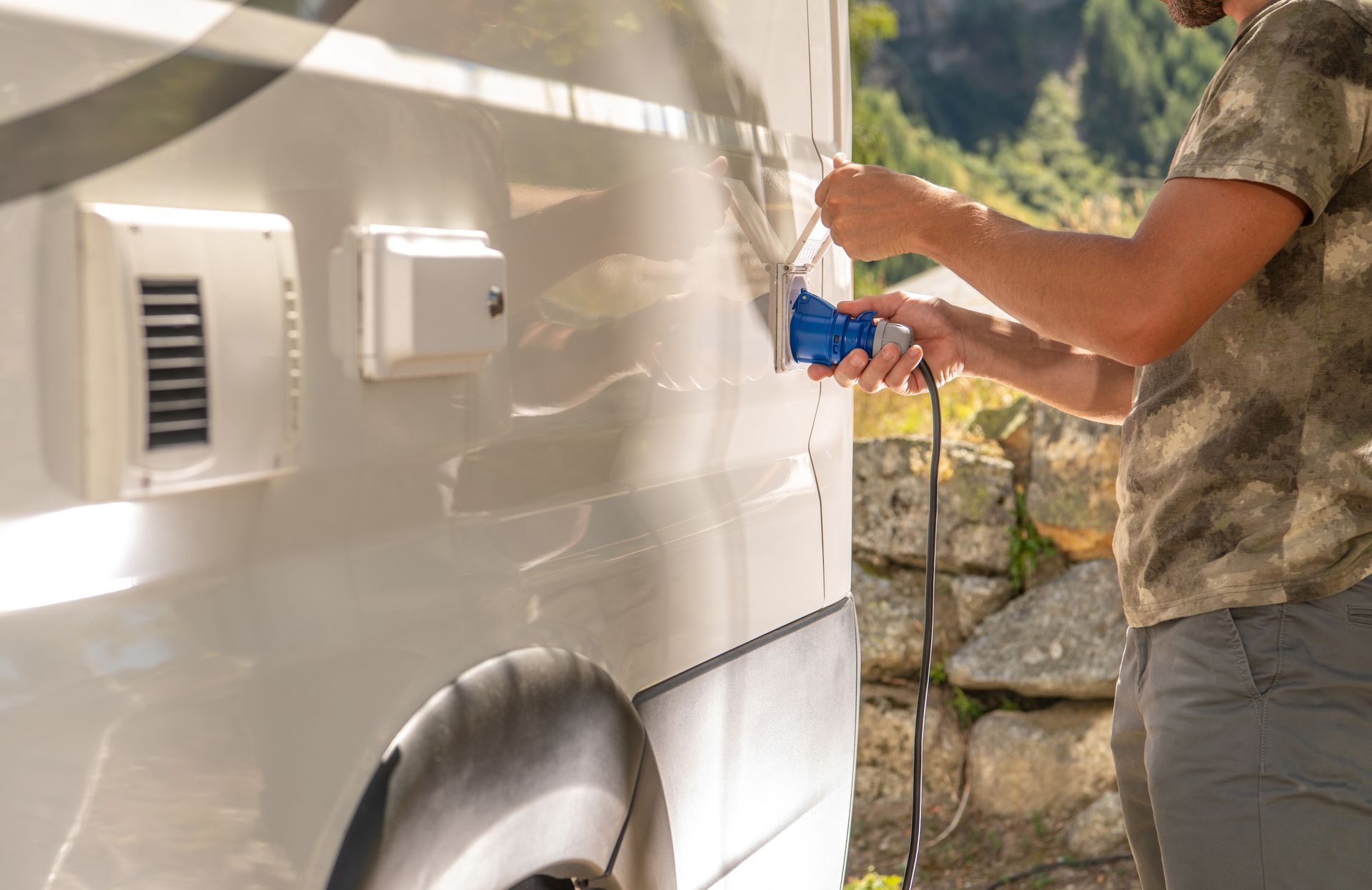
Interior Comfort Must-Haves
Because the RV is your home-on-wheels!
You’ve got the hookups, now it’s time to settle in. RV living is all about comfort, and a few smart upgrades can go a long way in making your space feel less like a rental on wheels and more like your personal home base.
Here are some must-have items that bring the comfort factor up and the frustration level down:
- Mattress Upgrade: Let’s be real: factory RV mattresses are the stuff of nightmares, not dreams. If you’re planning on spending any real time in your rig, upgrading your mattress should be at the top of your list. We shared our full experience with Wilderness RV Mattresses in this blog post and can confidently say: it’s worth every penny. Custom sizing, pillow-top comfort, and a good night’s sleep? Yes, please!
- Vent Fan Covers: These snap-on covers allow you to keep your vents open, rain or shine, so your RV can breathe. They also help with air circulation and keep the interior from getting stuffy or humid. Bonus: they also reduce the chance of “mystery smells.”
- Leveling Blocks + Wheel Chocks: Your RV needs to be level for proper fridge function, shower drainage, and overall stability and yes your comfort too. It wouldn't be fun walking around in an un-level RV. Stackable leveling blocks are the go-to solution for un-level sites, while wheel chocks keep your rig in place (especially when you unhitch a travel trailer or fifth wheel).
- Black Tank Treatments: Nobody likes a stinky RV bathroom. Drop-in tabs or liquid treatments help break down waste and toilet paper while keeping smells under control. Find a scent you can tolerate, this small step goes a long way.
- RV-Safe Toilet Paper: Yes, this matters! Regular toilet paper can clog your black tank and lead to some very messy (and expensive) problems. Stick with brands labeled “septic safe” or specifically designed for RV use.
- Small Vacuum or Broom & Dustpan: RV floors collect everything—dirt, sand, pet hair, mystery crumbs. A compact vacuum or a broom and dustpan combo helps keep your space clean without taking up much storage.
- Shower Curtain or Oxygenics Shower Head Upgrade: If your RV shower has a curtain instead of a door, a mildew-resistant upgrade is a must. And if you want better water pressure while still conserving water, the Oxygenics shower head is an RV favorite. It’s an easy swap that makes a huge difference.
- Nano Tape or Command Strips: Planning to hang decor, organizers, or lightweight shelves? Command strips and nano tape are your best friends in an RV. They stick well, remove cleanly, and help you avoid drilling holes in thin walls.
These interior essentials might seem like small details, but they’re what turn “just getting by” into “RV life done right.” From better sleep to cleaner floors and fresher air, these upgrades make everyday RV living smoother and way more enjoyable.
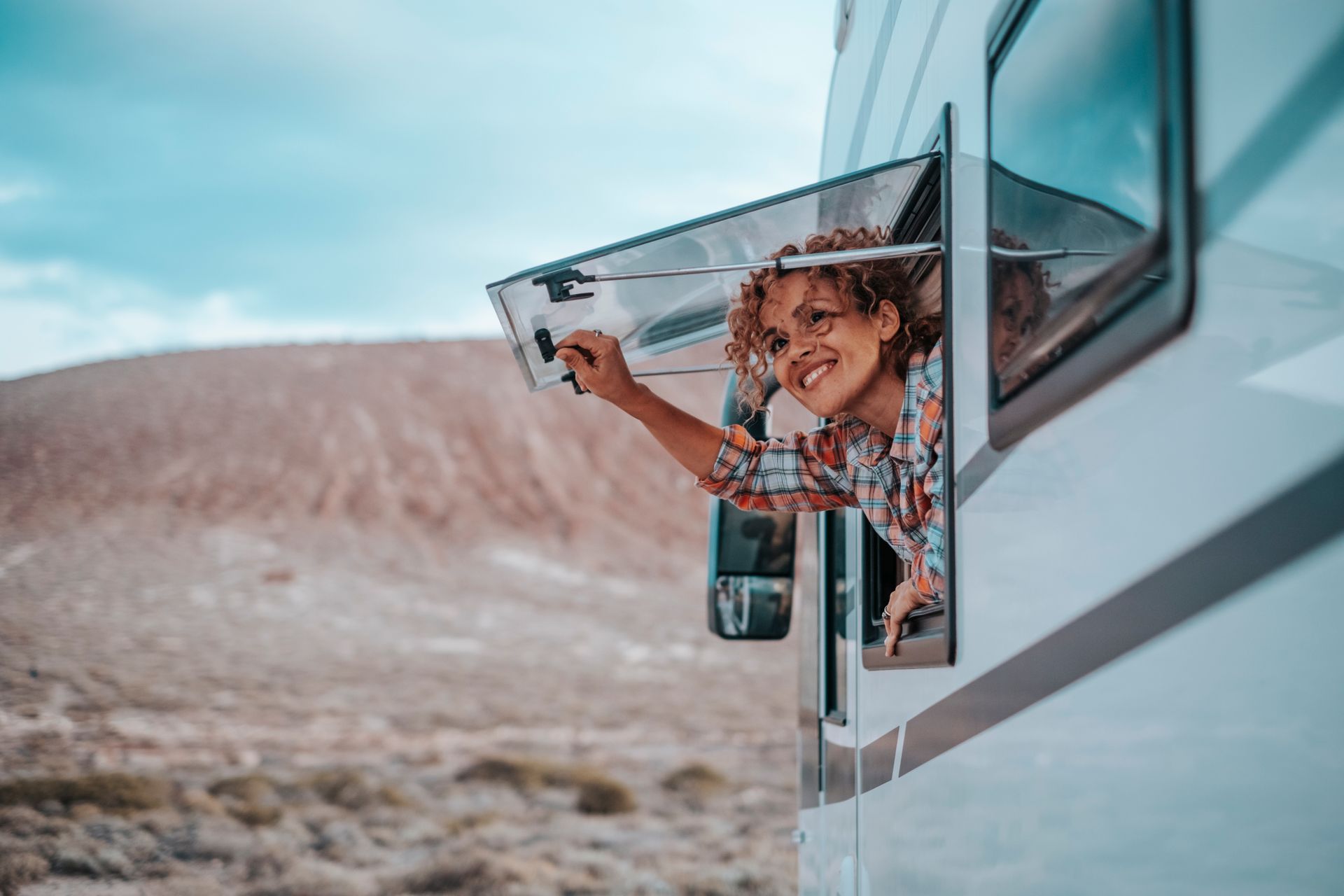
Safety & Maintenance Gear
Not exciting, but absolutely essential.
Let’s face it, this isn’t the fun shopping list, but it’s one of the most important. When something goes wrong (and at some point, it will), having the right tools and gear on hand can turn a major crisis into a minor inconvenience. These are the things that keep you safe, prepared, and less reliant on roadside luck.
Here’s what should always have a home in your RV:
- Fire Extinguishers: Most RVs come with a small fire extinguisher, usually by the door, but that might not be enough. Consider adding extras, especially in the kitchen and bedroom areas. It’s better to have them and never need them than the other way around.
- Wheel Chocks & Tire Pressure Gauge: Even if you’re on level ground, wheel chocks are a must to prevent unwanted rolling. Pair them with a tire pressure gauge (or better yet, a TPMS system) to keep tabs on tire health, one of the top causes of RV-related accidents is tire failure.
- RV Jack Pads: Soft ground or uneven sites can wreak havoc on your stabilizers. RV jack pads like Stromberg Carlson SnapPads or even a set of strong buckets or wooden blocks help protect your jacks, keep things level, and provide a solid foundation wherever you park.
- Basic Tool Kit: Even if you’re not super handy, a basic tool kit with a screwdriver set, pliers, adjustable wrench, zip ties, duct tape, and utility knife can get you through simple repairs. You’ll thank yourself the first time you tighten a loose cabinet hinge or patch a small leak. Check out this blog on basic tools to keep handy.
- Multimeter: Whether you’re chasing down a power issue or checking a battery charge, a digital multimeter is a must-have for diagnosing electrical problems. Not sure how to use one? We walk through the basics in our Multimeter 101 blog. It’s easier than you think, and can save you major headaches.
- First Aid Kit: You don’t need a trauma center, but a well-stocked first aid kit should include basics like bandages, antiseptic wipes, pain relievers, tweezers, and allergy meds. You’re often camping far from the nearest pharmacy, be ready.
- Reflective Safety Triangles/Cones: If you ever break down on the side of the road, these help alert oncoming traffic (especially at night). Some RVers also carry a reflective vest for extra visibility when working roadside.
- Headlamp or Flashlight: You’ll inevitably need to check something in the dark, whether it’s dumping tanks late or investigating a strange sound at 2 a.m. A headlamp is especially helpful for hands-free tasks and unexpected emergencies.
- Fuses & Spare Bulbs: RV systems rely on small fuses that can blow without much warning. Stock a few extras in various sizes, along with spare light bulbs for your interior fixtures and exterior running lights.
None of these items are flashy, but they’re the first things you’ll reach for when something goes sideways. Being prepared isn’t just about peace of mind—it’s about keeping your RV (and your adventure) rolling without major interruptions.
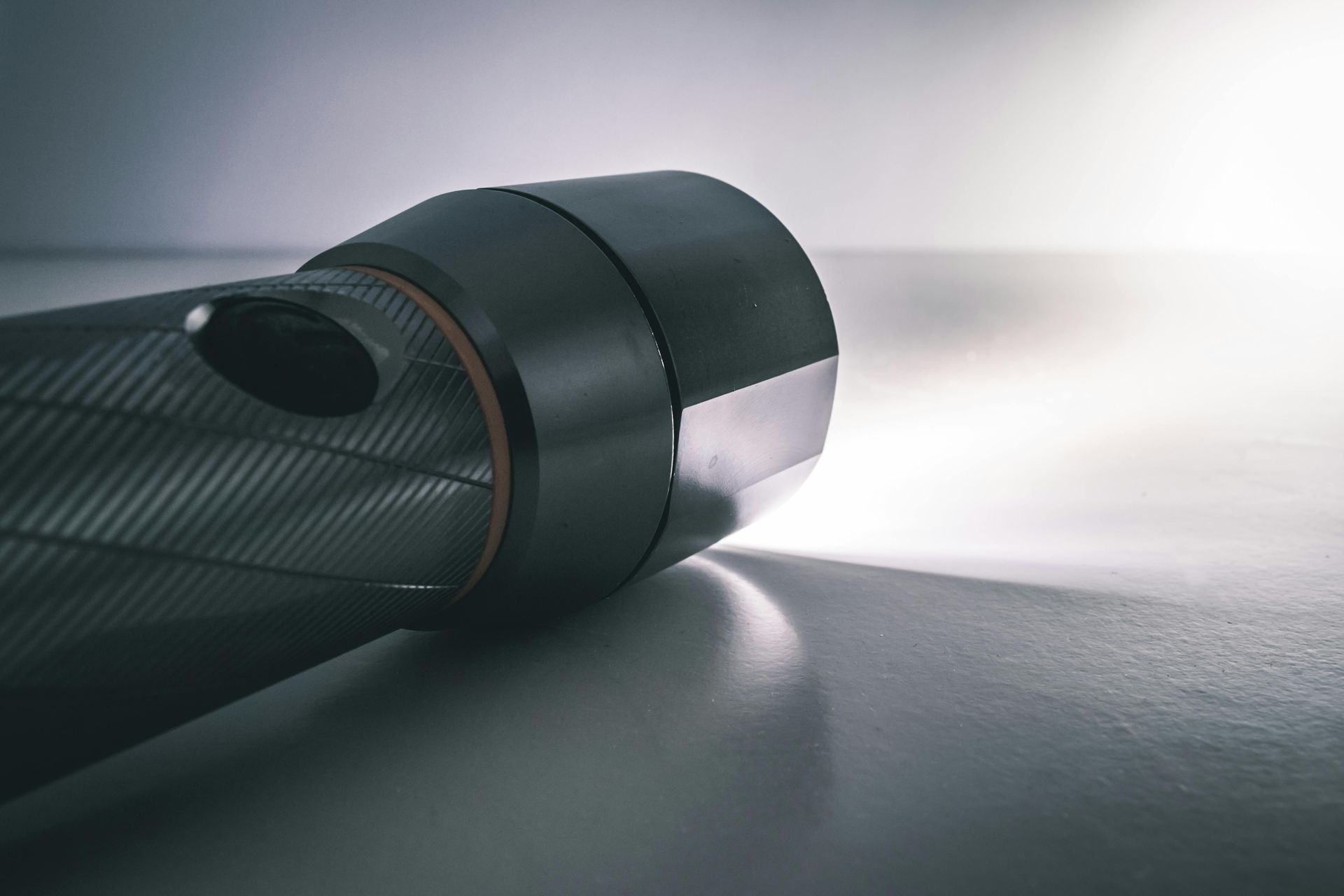
Bedding, Kitchen & Organization
Don’t forget, you’ll need to function inside too!
Living in an RV is a constant exercise in maximizing small spaces. Between tight kitchens, limited storage, and oddly shaped beds, being organized (and a little creative) makes everyday life smoother. These essentials help you cook, sleep, and store smarter, not harder.
- Collapsible Kitchenware: Bowls, colanders, measuring cups, even dish tubs-they all come in collapsible versions that save you precious cabinet space. Stack flat, store easily, and still do the job. Once you go collapsible, you’ll never go back.
- RV-Friendly Cookware (like nesting pots and pans): Big, bulky pans are your storage space's worst enemy. Opt for nesting cookware sets designed for RVs or boats—these usually include stackable pots, removable handles, and lids that fit multiple pans.
- Command Hooks & Storage Bins: Walls are your friends in an RV, use them! Command hooks are great for hanging hats, bags, keys, dog leashes, and towels. Pair them with a few plastic storage bins to keep under-bed areas, closets, and pantry shelves organized and accessible. Check out this blog for other organization ideas.
- Over-the-Door Organizers: RV bathrooms and bunk areas are notorious for having zero storage. Over-the-door organizers (with clear pockets) work great for shoes, toiletries, art supplies, toys, or snack stashes, and they don’t require any tools to install.
- Non-Slip Shelf Liners: When your home rolls down the highway, things move. Non-slip liners help keep your dishes, pantry items, and bathroom supplies from shifting or crashing every time you take a corner.
- Museum Putty: This is great for items that you'd love to leave in place when traveling, think alarm clocks, diffusers, items on a shelf and more. Museum putty is great at keeping things in place while you bounce down the highway.
- Bedding for Odd-Sized RV Beds: RV mattresses are often shorter, narrower, or shaped oddly, so your regular sheets might not fit. Either invest in RV-specific bedding or be prepared to get creative with elastic straps, sheet clips, or even custom-sized sets.
Smart organization and functional gear don’t just make your RV tidier, they make everyday life feel more like home. Plus, when everything has a place (and stays in place), setup and teardown are quicker and way less stressful.

Space-Saving RV Hacks
Small space? No problem. These tricks help you stretch every inch.
Use Vertical Space
Stackable bins, hanging baskets, and wall-mounted holders free up floor space.
Roll, Don’t Fold
Rolling your clothes takes up less room and makes drawers easier to manage.
Label Everything
Clear bins + labels = less digging and more relaxing.
Think Multipurpose
Look for gear that serves more than one function, like a dish drying mat that doubles as extra counter space.
Magnet Magic
Magnetic spice racks, knife strips, and curtain tie-backs? Total game changers.
Under Everything Storage
If it has space under it, use it! Beds, couches, dinettes—there’s gold under there.
Lights Where You Need Them
Battery-powered stick-on lights inside cabinets, closets, and under shelves make everything easier to find.
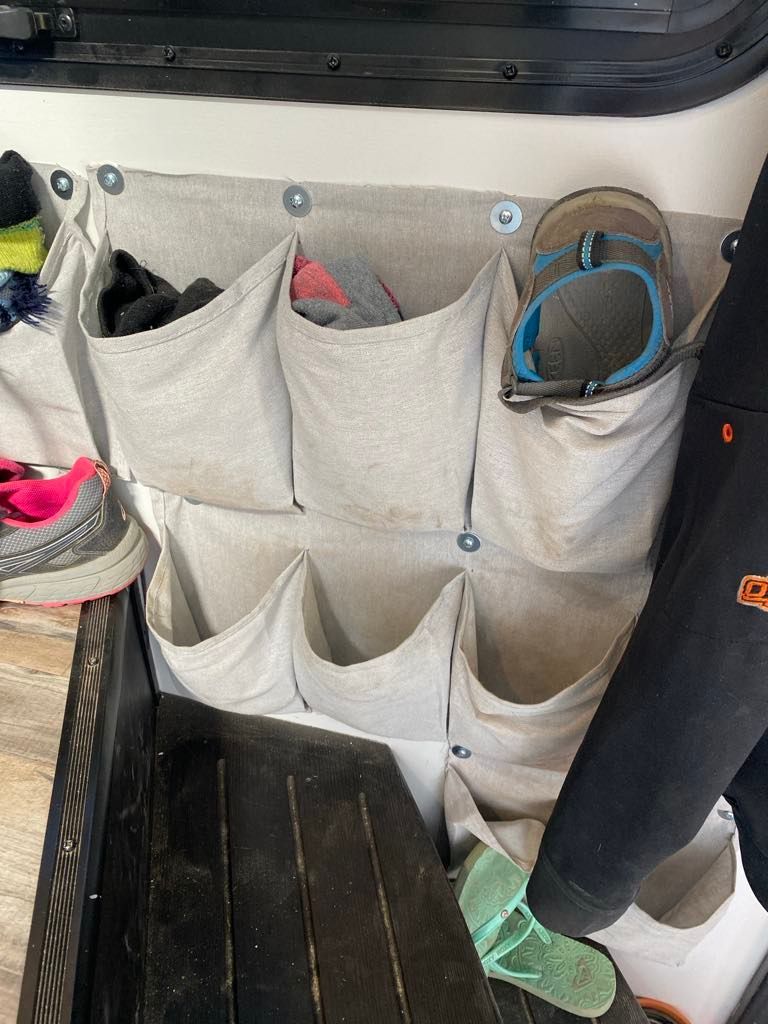
Outdoor Setup
Because the campsite becomes your living room.
One of the best things about RV life is expanding your living space beyond the four walls of your rig. Your campsite becomes your porch, your patio, your dining room, even your laundry room. Setting up a functional and cozy outdoor area makes every stay more enjoyable, whether you’re parked for a weekend or a month.
Here are the basics to create your perfect outdoor hangout, let me also say these are mostly like to haves or nice to haves, not necessarily must have items:
- Outdoor Rug: A large outdoor rug gives you a clean space to kick off your shoes and helps cut down on dirt tracked inside. It also defines your “camp zone” and adds a touch of homey comfort. Bonus: it protects grassy campsites from wear and tear too.
- Camping Chairs: Don’t rely on picnic tables (if your site even has one). A set of comfortable folding chairs is essential for relaxing, stargazing, sitting around the fire, or just enjoying your morning coffee. Want to level up? Get the ones with cup holders and footrests!
- Portable Table: Whether it’s for meal prep, dish drying, or game night, an extra folding table is one of the most versatile outdoor tools. Look for one that folds flat and stores easily in your pass-through compartment.
- Clothesline or Drying Rack: Wet towels, swimsuits, and even laundry need somewhere to hang. A compact drying rack or a portable clothesline makes it easy to take care of laundry or air out gear between uses. Pro Tip, grab the suction cup hooks to stick on the outside of your RV to hang wet towels from.
- Screen Room / Awning Shade: Want bug protection and extra shade? A screen room or awning shade panel expands your living space and keeps you comfortable on hot days or buggy nights. It’s perfect for dining, working, or hanging out—even in unpredictable weather.
- Grill or Outdoor Cooking Gear: Cooking outside keeps the heat (and smells) out of your RV. A small propane grill, griddle, or even a portable fire pit with a grill grate is perfect for burgers, veggies, and s’mores. Bonus: fewer dishes to wash inside!
- Outdoor Lighting for Safety & Ambience: Lighting isn’t just about mood, it’s also about visibility and safety. Solar stake lights are a great, no-fuss way to light up your steps or path to the bathroom. Rope lights or LED strips under the RV belly or around your patio area add a warm glow, help prevent trips and falls, and make your rig easier to find after dark. Bonus: they look cool.
REI is a fantastic resource for RVers who love blending outdoor adventure with practical gear and know-how. They even have an Expert Advice library packed with how-to guides on everything from camp cooking and sleeping systems to injury prevention and gear repair. REI offers curated gear and education that fits the RV lifestyle beautifully. They also host classes and events, and their co-op membership gives access to discounts, rewards, and a community of outdoor enthusiasts who share your love for life on the move.
Building out your outdoor space helps you fully enjoy your destination, not just the inside of your rig. With a few creature comforts and functional pieces, your campsite becomes an extension of your home and a key part of the RV lifestyle.
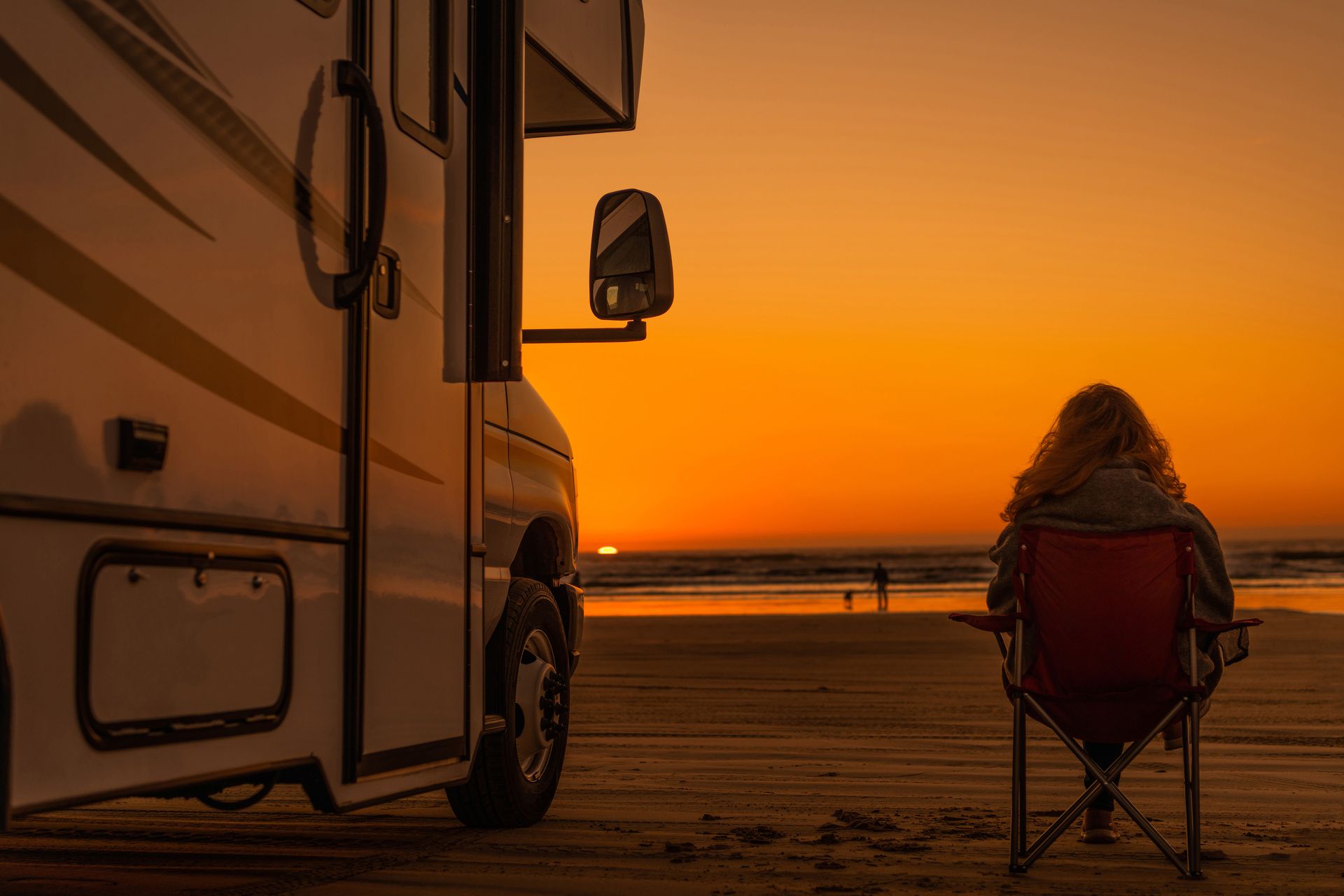
Tech & Navigation: The Often-Overlooked Lifesavers
When you think of RV gear, it’s easy to focus on hoses, cords, and gadgets you can hold in your hand, but don’t overlook the tech tools that make travel smoother, safer, and a whole lot less stressful. These items may not take up space in your storage bay, but they’ll pull their weight every single travel day.
Here are a few digital (and a couple old-school) must-haves:
- RV GPS or Mapping App: Not all roads are RV-friendly. Low-clearance bridges, weight restrictions, and tight turns can turn a dream drive into a disaster. That’s why it’s worth investing in an RV-specific GPS unit or app (like RV Life or CoPilot) that lets you plug in your rig’s height, weight, and length. It’ll keep you off the “no RVs allowed” roads and guide you to safer routes. I would also add a truckers atlas to your collection, its nice to have for quick look at routes to see if there are any major issues.
- Cell Booster or Hotspot or Starlink: Whether you’re working remotely, roadschooling, or just want reliable streaming at night, staying connected on the road takes more than your phone’s data plan. If you can afford Starlink its a must have. A mobile hotspot provides a stronger, more stable signal, and a cell booster (like weBoost) can amplify weak signals in remote areas. For full-time RVers or digital nomads, this tech is gold.
- Leveling App: Leveling your RV doesn’t have to be guesswork. Apps like LevelMatePRO or Bubble Level help you get your rig even without stepping outside 15 times. Some even sync with your phone via Bluetooth so you can see which side needs lifting while you're still in the driver’s seat.
- Walkie-Talkies for Backing Up: Yes, you have a cell phone, but walkie-talkies are faster, more reliable, and don’t drop signal at the worst possible moment (like when your spotter is guiding you into a tight site). A good set of rechargeable two-way radios saves time and arguments, and that makes everyone’s day better. Check out Rocky Talkies a camper favorite.
Tech isn’t just for fun, it’s a critical part of staying safe, informed, and connected while traveling. Don’t overlook these digital essentials when outfitting your RV for the road!
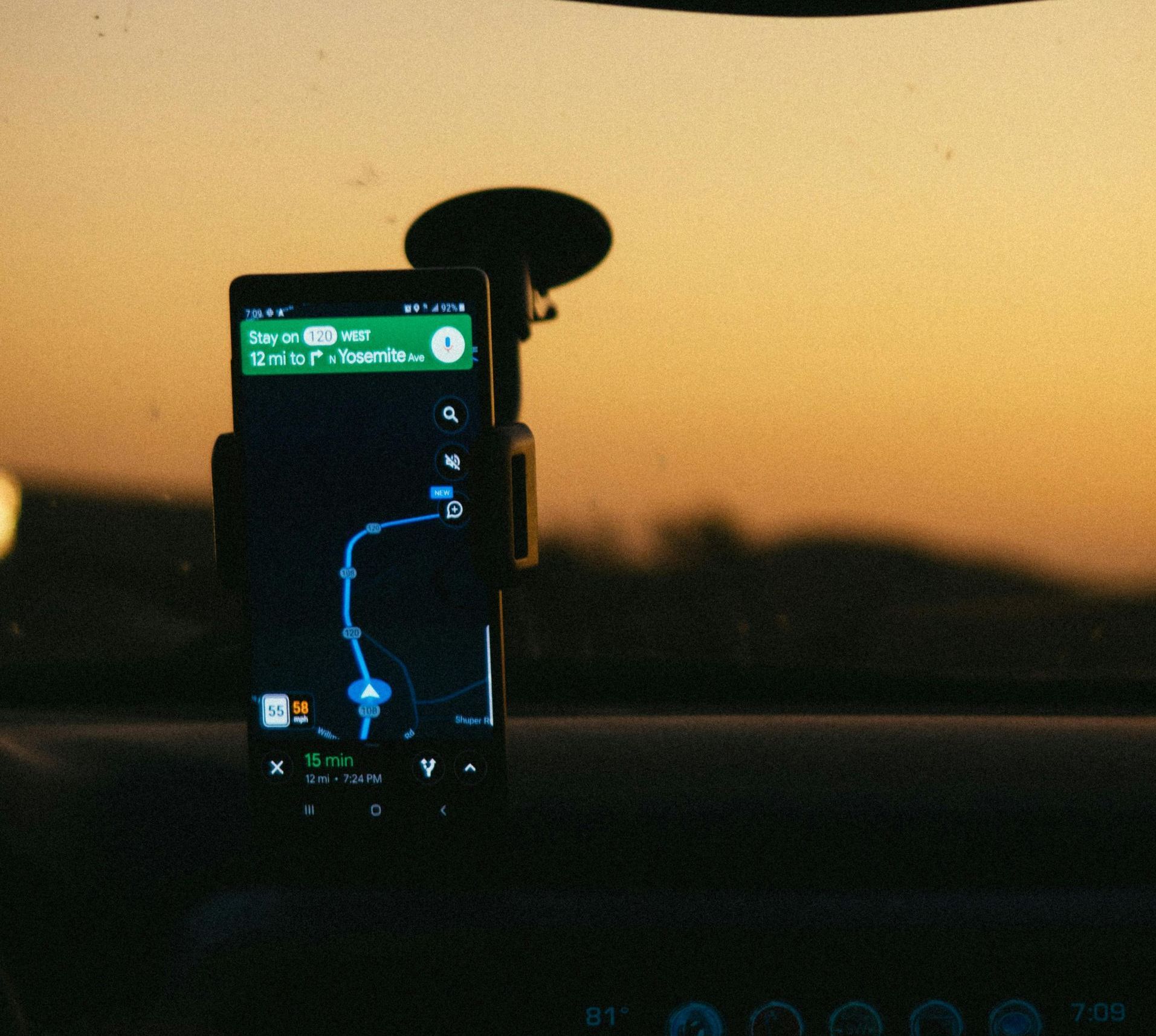
Upkeep of the RV: Because Everything Needs Maintenance on the Road
Owning an RV is kind of like owning a tiny house and a vehicle… combined. That means you’ve got double the maintenance and twice the chances for things to break if you’re not prepared. From keeping it clean to catching issues before they become big problems, a little upkeep goes a long way out here.
Here are the must-haves to keep your RV running (and looking) its best:
- Tank Flush Hose: Don’t use your fresh water hose to flush your black tank—just don’t. A dedicated tank flush hose (usually a color different then your fresh water hose) lets you clean out your tanks safely without risking cross-contamination. It’s cheap, smart, and necessary.
- RV Wash Brush & Soap: A collapsible brush with an extendable handle is a must for reaching the high spots. Pair it with something like Wash Wax All, a waterless cleaner that works wonders on fiberglass, decals, and windows. It’s gentle enough to use regularly and tough enough to handle the grime that comes with road life.
- Collapsible Ladder: Even if your RV has a ladder, a collapsible ladder gives you better angles (and safer footing) when inspecting your roof, cleaning solar panels, or checking seals. It folds flat and stores easily, making it perfect for tight RV bays.
- Slide-Out / General RV Lubricant (if applicable): If your RV has slide-outs, you’ll want a can of slide-out lubricant to keep gears and tracks running smooth. It helps prevent binding, squeaking, and unnecessary wear. A quick spray every few months does the trick.
- Lap Sealant & Silicone Caulk: Leaks are the enemy. Lap sealant (like Dicor) is used to seal roof vents, skylights, and edges. Keep a tube on hand for periodic roof checks or after heavy weather. A small tube of silicone caulk is also handy for sealing up cracks or gaps around windows and trim.
- Duct Tape & Gaffer’s Tape: No RV is complete without a roll of duct tape, it’s the temporary fix for a million problems. But also keep gaffer’s tape in your kit, it’s strong like duct tape but removes cleanly, making it perfect for interior repairs or temporary exterior fixes where you don’t want sticky residue.
The open road throws a lot at your RV—weather, wear, and unexpected bumps (literal and figurative). Having these basic tools and products on hand means you’ll spend less time scrambling for a fix and more time enjoying the journey.
Documentation & Tools for Learning: Your RV Brain on Paper (or in an App)
Gear is great, but knowledge and organization will carry you farther than any sewer hose ever could. Whether you're troubleshooting an issue at camp or planning your next big upgrade, keeping track of your RV's details can save time, money, and stress down the road.
Here’s what every new RVer should keep handy:
RV Owner’s Binder
Create a dedicated binder (or digital folder) that includes:
- All RV manuals (unit, appliances, systems)
- Warranty paperwork
- Maintenance records
- Repair contacts and service history
- Receipts for any upgrades
This becomes your go-to for troubleshooting, routine service, and when you eventually resell your rig.
Memberships Worth Having
Consider joining camping memberships and discount clubs that can save you hundreds over time. A few of our favorites:
- Passport America – 50% off campsites at participating RV parks across the country.
- Escapees/Xscapers – Excellent for full-timers, offering mail forwarding, legal domicile options, events, and community.
- RV Overnights (Use code: DE3ECSUL)– Unique overnight stays at farms, wineries, museums, and more (perfect for scenic one-night stops).
- FRVA (Family RV Adventures) – Offers exclusive discounts, group travel opportunities, and a welcoming community atmosphere that’s perfect for families and long-term travelers.
Each one offers something different—so find what fits your travel style.
Camping Apps & Checklists
Apps like Campendium, RV Life, AllStays, and ParkAdvisor help you find campsites, read reviews, check cell coverage, and more. Pair those with digital departure and setup checklists (or print your own) so you never forget the little things.
Notebook for Repairs & To-Dos
Whether it’s a paper notebook or a notes app on your phone, keeping a running list of little fixes, upgrade ideas, and what broke where will save your sanity, especially when things start to blur after 300 miles and a long travel day.
RVs are complex, and you’ll never stop learning. Having a system in place for storing knowledge and tracking your journey helps you grow into confident ownership, and it makes you the hero when something goes sideways.
Final Thoughts: Gear Up and Go with Confidence
Buying an RV is a big step toward freedom, fun, and unforgettable adventures, but making sure you’re properly equipped is just as important as picking the right rig. While the showroom might hand you the keys, it’s up to you to gather the gear that makes your RV fully functional, safe, and comfortable from day one.
The good news? You don’t need to buy everything at once. Start with the essentials—hookup gear, safety items, and basic tech—and build from there. Each trip will teach you a little more about what works for your travel style, and soon you'll have a setup that feels like home on wheels.
Remember: a well-prepared RVer is a happier, less-stressed traveler. So stock up, stay organized, and get ready to roll. Your next great adventure is waiting, make sure you’re ready for it.
Other blogs you might like...


